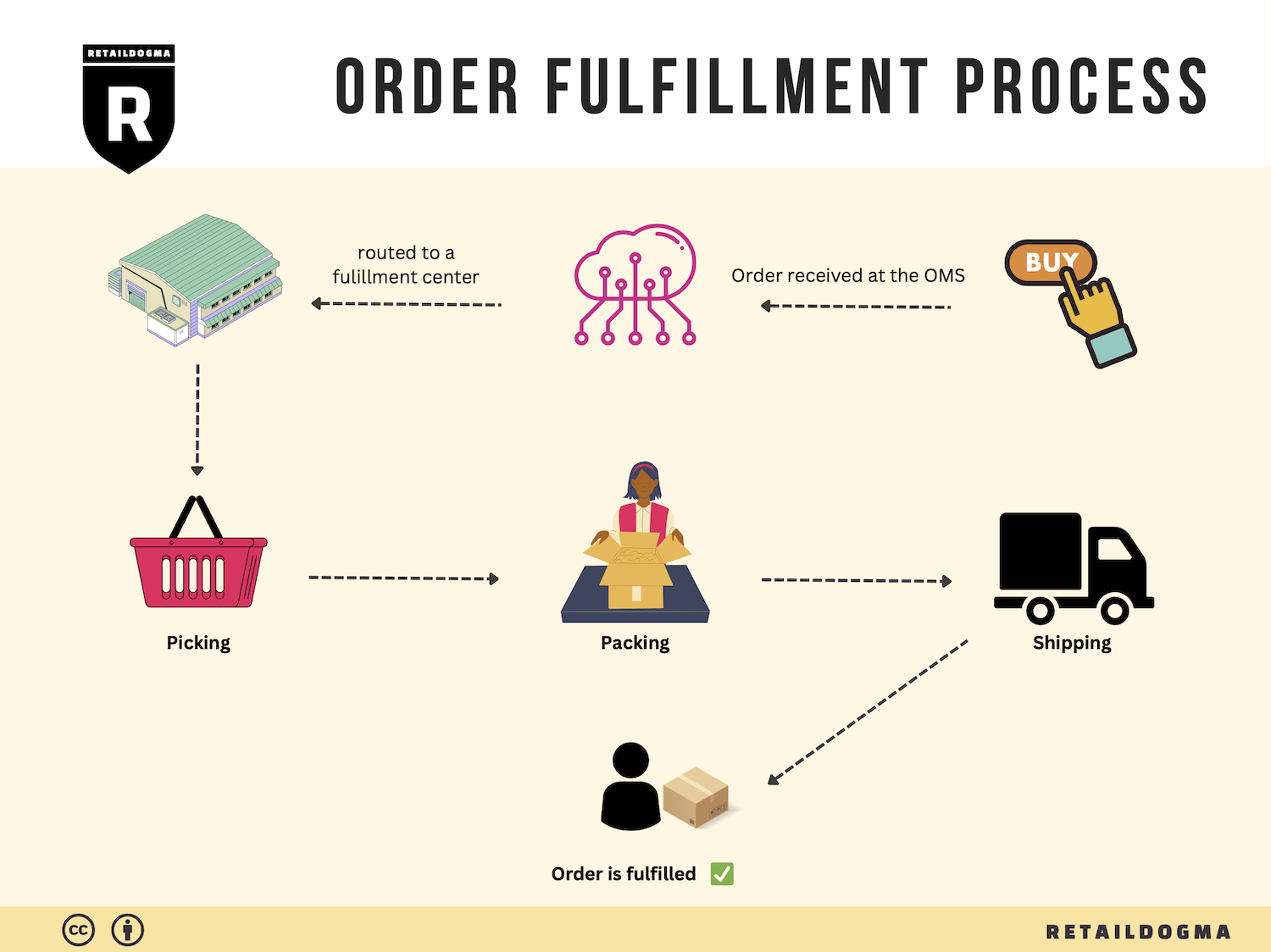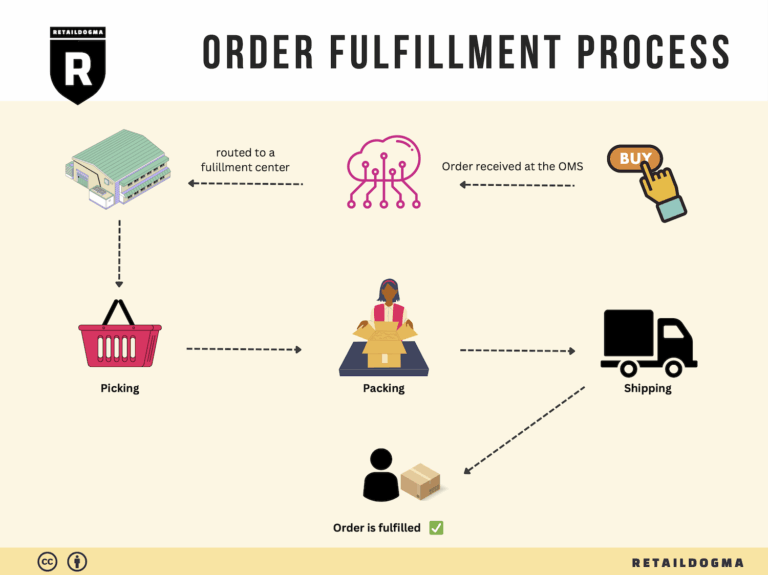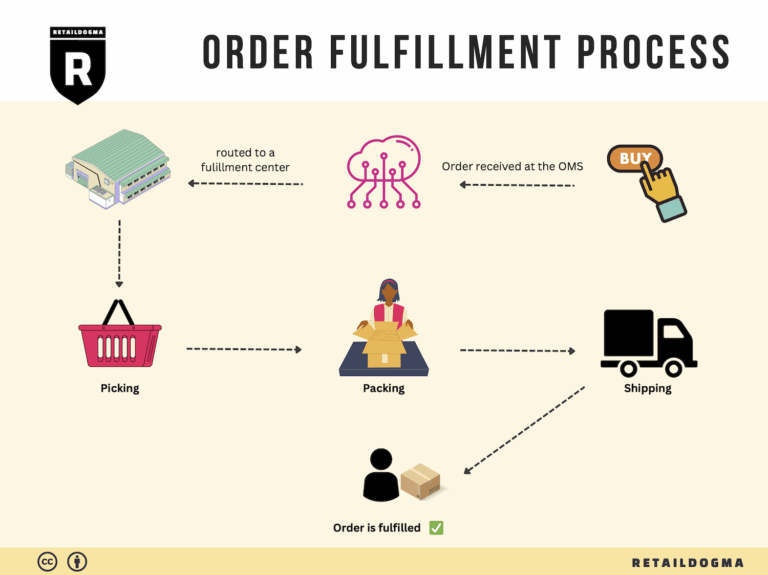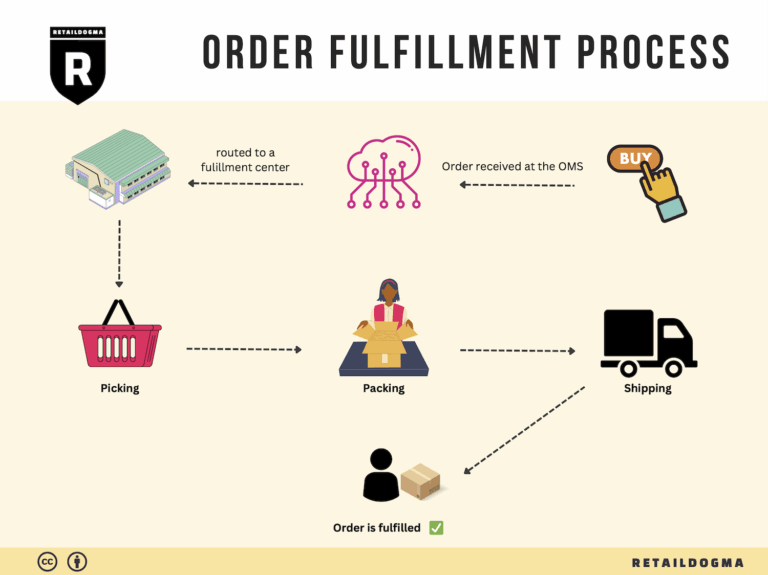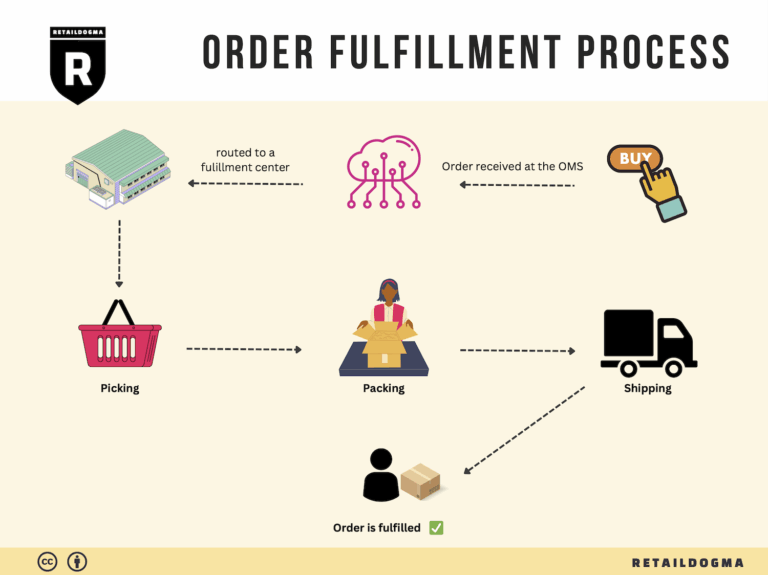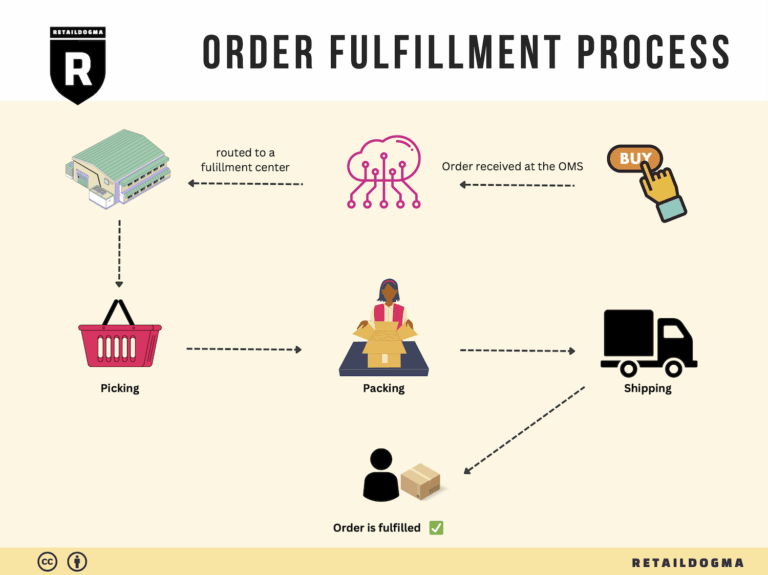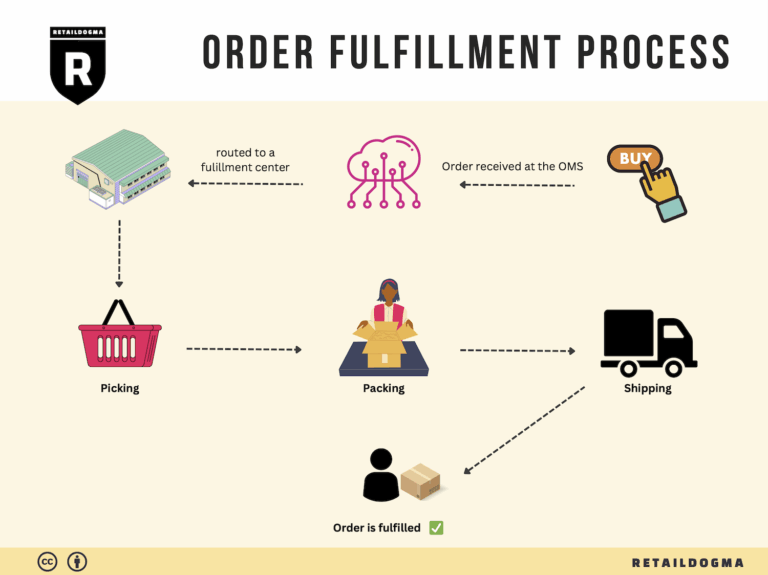How Order Fulfillment Works: A Step-by-Step Guide for Businesses
What is E-commerce Fulfillment? An Introduction for Growing Businesses
Understanding E-commerce Fulfillment
As an e-commerce business owner, you may find yourself drowning in the logistical challenges of packing and shipping orders. The excitement of growing sales can quickly turn into stress when faced with the realities of inventory management, order processing, and timely deliveries. This is where e-commerce fulfillment comes into play—a crucial yet often misunderstood aspect of your online business operations.
Simply put, fulfillment is the process of getting a product from your warehouse to your customer’s doorstep. It encompasses everything from receiving inventory and processing orders to picking, packing, and shipping products. An efficient fulfillment strategy is essential for maintaining customer satisfaction and fostering repeat business, especially as your sales volume increases.
In this guide, we will explore the various fulfillment models available to growing businesses. You’ll learn about Third-Party Logistics (3PL), Fulfillment by Amazon (FBA), and other options that can help streamline your operations. Understanding these models will empower you to choose the right solution that aligns with your business goals and customer expectations.
Additionally, we will delve into the core services associated with fulfillment, including inventory management, order tracking, and customer service. Each of these elements plays a vital role in creating a seamless experience for your customers and ensuring your products reach them in pristine condition and on time.
Choosing the right fulfillment partner is critical. We’ll provide insights on what to look for when selecting a logistics provider, including factors like reliability, technology integration, and scalability. Pricing is another key consideration; we will break down typical costs associated with different fulfillment models, helping you make informed financial decisions.
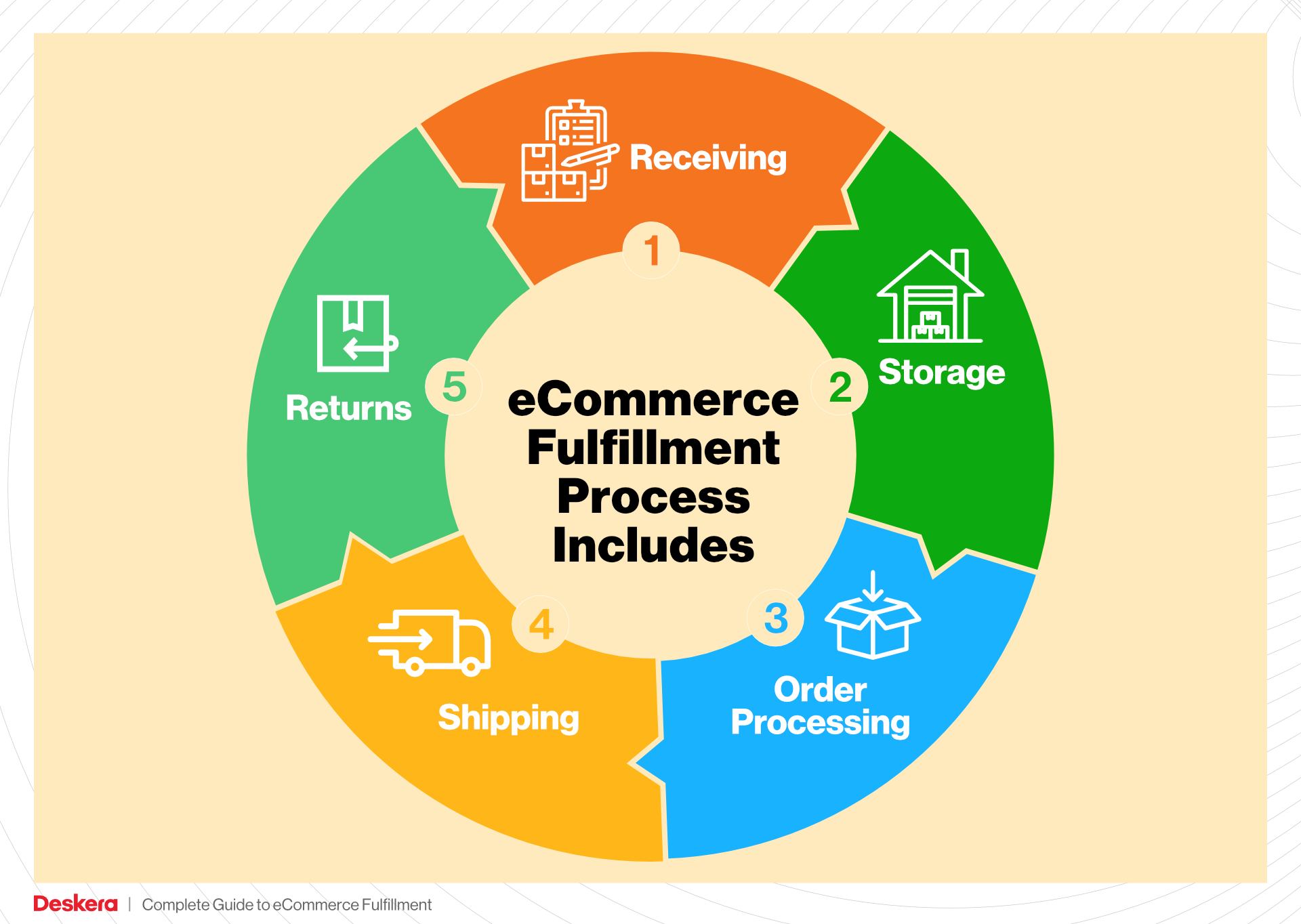
Ultimately, this guide aims to empower you with the knowledge needed to make smart decisions about your logistics strategy. By understanding the ins and outs of e-commerce fulfillment, you can focus on what you do best—growing your business—while ensuring your customers receive their orders efficiently and effectively.
What You’ll Learn In This Guide
- What is E-commerce Fulfillment? An Introduction for Growing Businesses
- The Order Fulfillment Process: From ‘Buy’ Button to Customer’s Door
- Comparing Fulfillment Models: In-House vs. 3PL vs. Dropshipping
- A Deep Dive into Amazon FBA: Pros, Cons, and Who It’s For
- Core Services Offered by Fulfillment Centers
- How to Choose a Fulfillment Partner: A 6-Point Checklist
- Understanding Fulfillment Pricing: A Breakdown of Common Fees
- Frequently Asked Questions (FAQs) about Fulfillment
- Conclusion: Is Outsourcing Fulfillment the Right Move for Your Business?
- Important Disclaimer
The Order Fulfillment Process: From ‘Buy’ Button to Customer’s Door
1. Receiving Inventory
The first step in the order fulfillment process involves receiving inventory from your suppliers or print-on-demand partners. This phase is crucial as it sets the stage for efficient order processing. Upon arrival, products should be checked against purchase orders to ensure accuracy in quantity and quality. This process often involves using Stock Keeping Units (SKUs), which are unique identifiers for each product.
Why is this important? Accurate inventory receiving helps prevent discrepancies that can lead to stockouts or overstock situations, impacting customer satisfaction and profitability. Proper documentation and systematic recording of received goods into your inventory management system are essential for maintaining accurate stock levels and for seamless integration with your e-commerce platform.
2. Warehouse Storage
Once inventory is received and verified, the next step is to store it in an organized manner within the warehouse. This involves categorizing products based on various factors such as size, type, or sales velocity. Efficient warehouse storage not only maximizes space but also enhances the speed at which orders can be picked later.
Key terms associated with this step include “bin location” and “inventory management system.” Utilizing these tools allows businesses to easily locate products and keep track of stock levels in real time. Effective storage strategies, such as using vertical space and proper labeling, can significantly reduce time spent searching for items during the picking process, thereby improving overall fulfillment efficiency.
3. Order Picking
Order picking is the process of selecting the correct products from warehouse storage to fulfill customer orders. This step is vital as it directly impacts the accuracy and speed of order fulfillment. Businesses can utilize various picking methods such as single order picking, batch picking, or wave picking, depending on their order volume and warehouse layout.
A key term in this phase is “pick lists,” which are generated based on customer orders and guide warehouse staff to the specific locations of items needed. The accuracy of order picking is essential; errors at this stage can lead to incorrect shipments, resulting in customer dissatisfaction and increased return rates. Implementing technology such as barcode scanners can enhance picking accuracy and efficiency.
4. Order Packing
After items have been picked, they move to the packing station, where they are prepared for shipment. This step is critical as it ensures that products are securely packaged to prevent damage during transit. Proper packing also includes including necessary documentation such as invoices and packing slips.
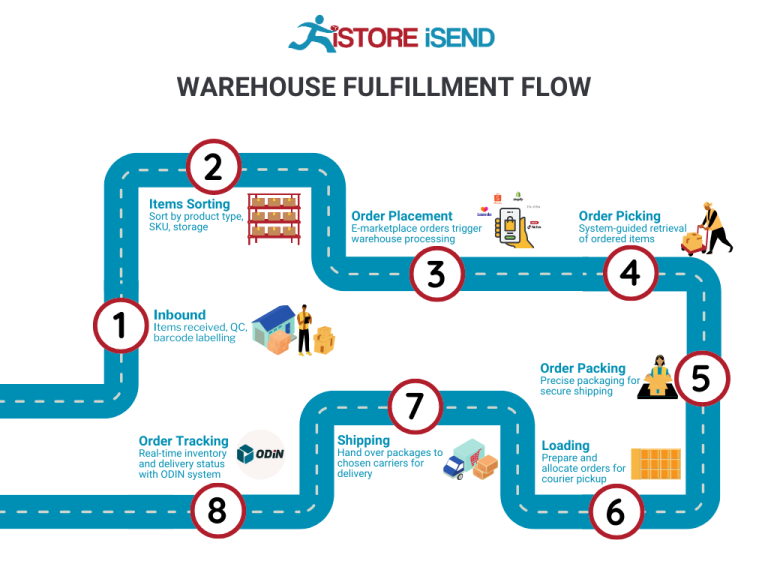
Important concepts in packing include “packaging materials” and “custom branding.” Using high-quality packaging materials ensures that products arrive in pristine condition, while branded packaging can enhance the customer experience and reinforce brand identity. Efficient packing processes, such as using predefined packing stations with all necessary materials, can streamline operations and reduce labor costs.
5. Shipping & Delivery
The final step in the order fulfillment process is shipping the packed orders to customers. This involves selecting the appropriate shipping methods based on factors such as cost, delivery speed, and geographic location. Businesses often use shipping software that integrates with their e-commerce platforms to automate shipping label creation and tracking updates.
Key terms in this step include “last-mile delivery” and “shipping carriers.” Last-mile delivery refers to the final leg of the shipping process, where packages are delivered to the customer’s doorstep. Choosing reliable shipping carriers and offering various shipping options can significantly enhance customer satisfaction. Additionally, providing tracking information helps keep customers informed about their order status, further improving the overall shopping experience.
In summary, understanding and optimizing each step of the order fulfillment process is essential for e-commerce businesses looking to scale. From receiving inventory to ensuring timely delivery, each phase plays a crucial role in maintaining operational efficiency and enhancing customer satisfaction. By implementing best practices and utilizing technology, businesses can streamline their fulfillment processes, ultimately driving growth and success.
Comparing Fulfillment Models: In-House vs. 3PL vs. Dropshipping
Fulfillment Model Comparison Table
| Model | Who Handles Inventory | Best For (Business Stage) | Key Advantage | Key Disadvantage |
|---|---|---|---|---|
| In-House Fulfillment | The business itself | Established businesses | Full control over inventory and quality | High overhead costs and complexity in operations |
| Third-Party Logistics (3PL) | A specialized logistics provider | Growing businesses and startups | Scalability and reduced operational burden | Less control over the fulfillment process |
| Dropshipping | Supplier | Startups and businesses with limited capital | Low startup costs and no inventory risk | Lower profit margins and potential quality control issues |
In-House Fulfillment
In-house fulfillment involves managing the entire logistics process within your own business. This means you are responsible for storing, picking, packing, and shipping your products. This model is typically best suited for established businesses that have a stable order volume and can afford the overhead costs associated with warehousing and logistics operations. The primary advantage of in-house fulfillment is the level of control it offers. You can oversee every aspect of the fulfillment process, ensuring quality and consistency. You can also implement your own branding strategies in packaging and shipping. However, the disadvantages are significant; high overhead costs, labor requirements, and the complexity of managing logistics can strain resources. Additionally, businesses may struggle to scale quickly if they experience unexpected spikes in demand.
Third-Party Logistics (3PL)
Third-party logistics (3PL) providers take over the logistics and fulfillment responsibilities for your business. They handle everything from inventory storage to order processing and shipping. This model is particularly beneficial for growing businesses and startups that need to scale operations without investing heavily in infrastructure. One of the key advantages of using a 3PL is the ability to leverage their expertise and resources, allowing you to focus on core business activities like marketing and product development. Additionally, 3PLs often provide advanced technology for inventory management and order tracking, which can enhance operational efficiency. However, a downside is the reduced control over the fulfillment process. Relying on a third-party provider can lead to inconsistencies in service quality and potential communication issues, especially if the provider is not aligned with your brand values.
Dropshipping
Dropshipping is a fulfillment model where the retailer does not keep products in stock. Instead, when a customer places an order, the retailer purchases the item from a third-party supplier who then ships it directly to the customer. This model is ideal for startups and businesses with limited capital, as it significantly reduces the financial burden associated with inventory management. One of the most appealing advantages of dropshipping is the low startup costs; you can start selling products without any upfront investment in inventory. This allows for a broad range of products to be offered without the risk of unsold stock. However, dropshipping also comes with its challenges. Profit margins can be lower due to the costs associated with purchasing from suppliers, and quality control can be an issue. Since you are not handling the products yourself, ensuring consistent quality and timely shipping can be difficult, which may lead to customer dissatisfaction.
In conclusion, choosing the right fulfillment model depends on the unique needs and circumstances of your business. In-house fulfillment offers control but comes with high costs and complexity, making it suitable for established businesses. Third-party logistics provide scalability and efficiency but may sacrifice some control. Dropshipping offers a low-risk entry point for new businesses but can lead to challenges in quality and profitability. As your business scales, it’s essential to regularly evaluate your fulfillment strategy to ensure it aligns with your growth objectives and customer expectations.
A Deep Dive into Amazon FBA: Pros, Cons, and Who It’s For
Understanding Fulfillment by Amazon (FBA)
Fulfillment by Amazon (FBA) is a service offered by Amazon that allows e-commerce sellers to store their products in Amazon’s fulfillment centers. Amazon then takes care of storage, packaging, and shipping products directly to customers on behalf of the sellers. This service is particularly attractive for businesses looking to scale their operations without the burden of managing logistics.
When a customer places an order for a product fulfilled by FBA, Amazon handles the entire process—from order processing and payment to shipping and customer service. Sellers benefit from Amazon’s vast logistics network, which includes fast shipping options and customer support, enhancing the overall shopping experience.
How FBA Works
-
Setup: Sellers create an Amazon Seller account and list their products on the platform. They choose which products they want to fulfill through FBA.
-
Inventory Shipment: Sellers send their inventory to Amazon’s fulfillment centers. Amazon provides specific guidelines for packaging and labeling to ensure smooth processing.
-
Storage: Once the inventory arrives at Amazon, it is stored until a customer places an order. Sellers can track their inventory levels through the Seller Central dashboard.
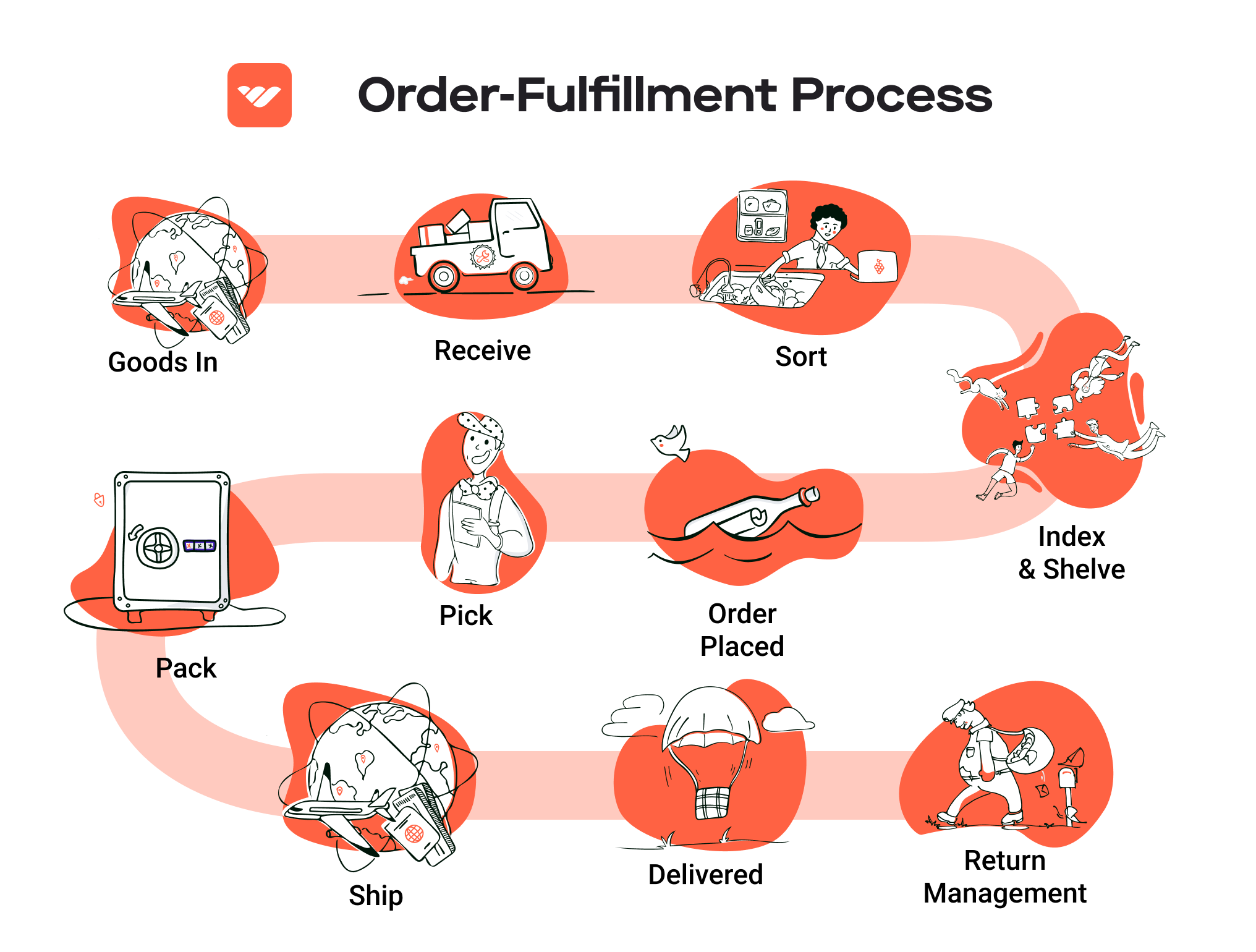
-
Order Fulfillment: When an order is placed, Amazon picks, packs, and ships the product directly to the customer. This includes offering various shipping options like Amazon Prime.
-
Customer Service: Amazon also manages customer service and returns for FBA orders, allowing sellers to focus on growing their business.
Pros of Fulfillment by Amazon
1. Prime Eligibility
One of the most significant advantages of using FBA is that products become eligible for Amazon Prime. This means Prime members can receive free two-day shipping on eligible items, significantly increasing the likelihood of sales due to the attractiveness of fast, free shipping.
2. Customer Trust
Amazon is a globally recognized brand, and many customers trust the platform for their purchases. By using FBA, sellers can leverage this trust, as customers often feel more secure buying products that are fulfilled by Amazon, thanks to their reliable service and return policies.
3. Multi-Channel Fulfillment
FBA isn’t limited to sales on Amazon. Sellers can use FBA to fulfill orders from their own websites or other marketplaces. This flexibility allows businesses to streamline their logistics and offer a consistent customer experience across multiple sales channels.
4. Scalability
FBA allows sellers to scale their businesses without needing to invest heavily in warehouse space or staffing. As sales increase, Amazon’s infrastructure can handle increased order volume without requiring sellers to make significant operational changes.
5. Time Savings
By outsourcing fulfillment to Amazon, sellers can save time on order processing, shipping, and customer service. This enables them to focus on other critical aspects of their business, such as marketing and product development.
Cons of Fulfillment by Amazon
1. High Fees
While FBA offers many benefits, it comes with a cost. Sellers must pay for storage fees, fulfillment fees, and other associated costs that can add up quickly. These fees can eat into profit margins, particularly for lower-priced products.
2. Strict Inventory Rules
Amazon has specific requirements regarding inventory management, including limits on the number of units that can be stored in their warehouses. Sellers must carefully monitor their stock levels and sales velocity to avoid overstocking or running out of inventory.
3. Commingling Risks
FBA uses a practice known as commingling, where inventory from different sellers is stored together. This can lead to issues if products are damaged or if customers receive items from other sellers instead of the original seller’s stock. This situation can harm brand reputation and customer satisfaction.
4. Loss of Control
Using FBA means that sellers relinquish some control over the fulfillment process. Amazon handles packaging and shipping, which can lead to inconsistencies in branding and customer experience. Sellers may not have the opportunity to include personalized messages or branded packaging.
5. Complex Returns
While Amazon manages customer service and returns, the process can sometimes be complex for sellers. Returned items may not always be in resalable condition, and sellers may incur additional costs for returns and restocking.
Who is FBA Best For?
Fulfillment by Amazon is best suited for e-commerce businesses looking to scale rapidly and benefit from Amazon’s extensive logistics network. It is particularly advantageous for:
-
Small to Medium-Sized Businesses: Sellers who do not have the resources to manage their own fulfillment can benefit greatly from the FBA model, allowing them to grow their sales without the complexities of logistics.
-
Brands with Established Products: Businesses that have a proven track record of sales can leverage FBA to enhance their distribution capabilities and reach a broader audience.
-
Sellers with Seasonal Demand: FBA is ideal for businesses that experience fluctuations in demand, as Amazon can efficiently manage inventory and fulfillment based on seasonal spikes.
-
Multi-Channel Sellers: Businesses that sell on multiple platforms will find FBA advantageous for streamlining their fulfillment process across different sales channels.
In conclusion, Fulfillment by Amazon offers a powerful solution for e-commerce sellers looking to streamline their operations, enhance customer trust, and leverage Amazon’s logistics expertise. However, it is essential to weigh the pros and cons to determine if it aligns with your business model and growth strategy.
Core Services Offered by Fulfillment Centers
Inventory Management & Warehousing
Inventory management and warehousing are fundamental services provided by fulfillment centers, ensuring that e-commerce businesses can efficiently store and manage their products. Fulfillment centers typically offer climate-controlled storage facilities equipped with advanced inventory management systems that track stock levels in real-time.
What It Is
This service involves receiving, storing, and maintaining inventory until it is sold. Fulfillment centers utilize sophisticated software to monitor stock levels, reorder points, and product movement, enabling businesses to maintain optimal inventory levels without the burden of managing physical stock themselves.
Benefits
-
Cost Efficiency: By outsourcing warehousing, businesses can save on overhead costs associated with leasing, staffing, and maintaining a warehouse. Fulfillment centers often provide scalable solutions, allowing businesses to pay only for the storage space they need.
-
Improved Accuracy: Advanced inventory management systems reduce the risk of human error in tracking stock, leading to more accurate order fulfillment and fewer discrepancies.
-
Space Optimization: Fulfillment centers are designed to maximize space efficiency, allowing businesses to store a larger variety of products without the constraints of traditional warehousing.
-
Scalability: As businesses grow, fulfillment centers can easily adapt to increased inventory needs, enabling seamless scaling of operations.
Pick and Pack Services
Pick and pack services are crucial to the fulfillment process, where items are selected from inventory and packaged for shipment to customers. This operation is typically performed by trained staff using streamlined processes to ensure speed and accuracy.
What It Is
The pick and pack process involves several steps: picking the right items from the warehouse shelves, packing them securely to prevent damage during transit, and labeling them for shipment. Fulfillment centers often use technology, such as barcode scanning, to enhance accuracy and efficiency.
Benefits
-
Speed of Fulfillment: Fulfillment centers are equipped with optimized workflows that allow for rapid picking and packing, which can significantly reduce shipping times. Quick turnaround can enhance customer satisfaction and loyalty.
-
Error Reduction: Automation and systematic processes minimize the risk of errors during order fulfillment. This leads to fewer returns and exchanges, saving time and resources.
-
Custom Packaging Options: Many fulfillment centers offer customizable packaging solutions, allowing businesses to enhance their brand identity through branded packaging, inserts, and special wrapping.
-
Order Flexibility: Fulfillment centers can handle a variety of order types, from single-item orders to bulk shipments, giving businesses the flexibility to meet diverse customer demands.
Kitting and Assembly
Kitting and assembly services allow e-commerce businesses to create bundled products or multi-component items before they are shipped to customers. This service is particularly beneficial for companies offering subscription boxes, promotional kits, or complex products requiring assembly.
What It Is
Kitting involves grouping multiple products into a single package, while assembly refers to the construction of items from various components. Fulfillment centers have the necessary tools and expertise to efficiently manage these processes.
Benefits
-
Enhanced Product Offerings: Kitting and assembly enable businesses to offer unique product combinations, which can attract more customers and increase average order value.
-
Time Savings: By outsourcing kitting and assembly to fulfillment centers, businesses can focus on core activities such as marketing and product development instead of labor-intensive assembly tasks.
-
Quality Control: Fulfillment centers maintain quality standards during the kitting and assembly process, ensuring that products meet customer expectations and reducing the likelihood of returns.
-
Inventory Management: Kitting allows businesses to manage inventory more effectively by reducing the number of individual SKUs, simplifying stock management and replenishment processes.
Returns Management (Reverse Logistics)
Returns management, also known as reverse logistics, is an essential service provided by fulfillment centers that handles the process of returned items from customers back to the warehouse. Efficient returns management is critical for maintaining customer satisfaction and loyalty.
What It Is
This service encompasses the entire process of handling returns, including receiving returned products, inspecting their condition, restocking items, and managing refunds or exchanges. Fulfillment centers implement standardized processes to streamline returns and make them hassle-free for both the business and the customer.
Benefits
-
Customer Satisfaction: A well-managed returns process enhances customer trust and satisfaction, as customers feel secure knowing that they can easily return products if needed.
-
Operational Efficiency: By outsourcing returns management, businesses can ensure that returned items are processed quickly and efficiently, minimizing disruptions to their operations.
-
Data Insights: Fulfillment centers can provide valuable data on return reasons and trends, helping businesses identify potential product issues or areas for improvement.
-
Inventory Recovery: Efficient returns management allows businesses to quickly restock returned items that are in sellable condition, minimizing losses and optimizing inventory turnover.
In conclusion, partnering with a fulfillment center provides e-commerce businesses with essential services that streamline operations, enhance customer experience, and support scalable growth. By leveraging these core services, businesses can focus on their core competencies while ensuring that their logistics and fulfillment processes are handled with expertise.
How to Choose a Fulfillment Partner: A 6-Point Checklist
Location & Warehouse Network
Importance: The geographical location of your fulfillment partner’s warehouses can significantly impact shipping times and costs. A partner with strategically placed warehouses can reduce transit times and provide better shipping rates, particularly for e-commerce businesses targeting specific regions.
Questions to Ask:
– Where are your warehouses located, and how do they align with my target markets?
– Do you offer regional fulfillment options to reduce shipping times and costs?
– How do you handle international shipping, and what are the associated costs?
Technology & Integrations
Importance: A fulfillment partner’s technology and integration capabilities can streamline your operations. Efficient order management systems (OMS) and inventory management systems (IMS) can automate processes, reduce errors, and provide real-time visibility into inventory levels and order statuses.
Questions to Ask:
– What technology platform do you use for order and inventory management?
– Can your systems integrate with my existing e-commerce platform (like Shopify, WooCommerce, etc.)?
– Do you offer real-time tracking for orders, and how accessible is this information for both my team and customers?
Specializations (e.g., Cold Storage, Oversized Items)
Importance: Depending on the nature of your products, you may need a fulfillment partner that specializes in specific areas, such as cold storage for perishable goods or handling oversized items. A partner with the right capabilities can prevent damage and ensure compliance with industry regulations.
Questions to Ask:
– Do you have experience fulfilling my type of products (e.g., clothing, food, electronics)?
– What special handling or storage capabilities do you offer?
– Can you manage returns for specialized products, and what is your process for doing so?
Scalability & Capacity
Importance: As your business grows, your fulfillment needs will change. A good partner should be able to scale operations to meet increased demand without compromising service quality. Understanding their capacity to handle fluctuations in order volume is critical for long-term success.
Questions to Ask:
– What is your current capacity for order fulfillment, and how easily can you scale?
– How do you handle peak seasons or unexpected spikes in order volume?
– Are there any limitations on the types of products or order sizes you can fulfill as my business grows?
Pricing and Contracts
Importance: Transparent pricing structures and flexible contract terms are essential for financial planning. A fulfillment partner should provide clear information about costs associated with storage, fulfillment, shipping, and additional services. Understanding the terms of the contract can help you avoid hidden fees.
Questions to Ask:
– Can you provide a detailed breakdown of your pricing model (storage fees, pick-and-pack fees, shipping rates)?
– Are there any additional fees I should be aware of, such as for returns or special packaging?
– What are the terms of the contract, and is there flexibility to renegotiate as my business needs change?
Customer Support & Reviews
Importance: Strong customer support can be a differentiator when choosing a fulfillment partner. Reliable support ensures that any issues can be addressed quickly, minimizing disruptions to your operations. Reviews and testimonials can provide insights into the partner’s reputation and service quality.
Questions to Ask:
– What support channels do you offer (e.g., phone, email, chat), and what are your response times?
– Can you provide references or case studies from businesses similar to mine?
– How do you handle issues with orders, and what is your process for resolving customer complaints?
Conclusion
Choosing the right fulfillment partner is a critical decision that can affect your operational efficiency and customer satisfaction. By following this checklist and asking the right questions, you can make an informed choice that aligns with your business needs and growth ambitions. A thoughtful evaluation of potential partners will not only streamline your logistics but also enhance your overall business performance as you scale.
Understanding Fulfillment Pricing: A Breakdown of Common Fees
Initial Setup Fees
When partnering with a print fulfillment service, many companies will charge an initial setup fee. This fee typically covers the costs associated with establishing your account, including integrating your e-commerce platform with their system, setting up product listings, and configuring your branding preferences.
The calculation of this fee can vary widely based on the complexity of your requirements. For instance, if you require custom branding options or have a large catalog of products to set up, the fee might be higher. Some services offer waived setup fees as part of promotional campaigns or if you commit to a long-term contract. As a best practice, always inquire about potential setup fees upfront to avoid unexpected costs.
Receiving Fees
Receiving fees are charged when the fulfillment center takes possession of your inventory. This fee encompasses the labor and equipment costs associated with unloading, inspecting, and storing your products.
Typically, receiving fees are calculated per shipment or per pallet, depending on the fulfillment provider’s pricing model. For example, if you send multiple pallets of products, you might incur a flat rate for each pallet received, or a per-item fee if the shipment consists of individual items. Understanding this fee structure can help you plan your inventory shipments more effectively and avoid surprises in your operational costs.
Storage Fees (per pallet/bin)
Storage fees are incurred for the space your products occupy within the fulfillment center. These fees can be charged on a monthly basis and are typically calculated per pallet or per bin.
Fulfillment centers may use different metrics for storage fees, such as cubic footage or weight, which can affect pricing. For instance, if you have a high volume of items with low turnover, you may end up paying significantly in storage fees. To optimize your costs, regularly assess your inventory levels and turnover rates, and consider using just-in-time inventory strategies to minimize storage durations.
Pick & Pack Fees (per item/order)
Pick and pack fees are charged for the labor involved in selecting products from the warehouse, packing them, and preparing them for shipping. This is a critical part of the fulfillment process, as it directly impacts the efficiency of order processing.
These fees can vary based on the complexity of the order—such as the number of items being picked or any special packing requirements (like branded packaging or gift wrapping). Typically, fulfillment centers may charge a flat fee per order or a per-item fee. Understanding this fee structure is essential for pricing your products accurately and maintaining healthy margins.
Shipping Fees
Shipping fees cover the cost of transporting your products to customers once they have been picked and packed. These fees can vary greatly based on factors such as the shipping method chosen (standard, expedited, etc.), the destination, and the weight of the package.
Many fulfillment services offer discounted shipping rates through partnerships with major carriers, which can significantly reduce your overall shipping costs. It’s advisable to compare shipping options and rates among different fulfillment providers to find the best fit for your business. Additionally, consider incorporating shipping costs into your product pricing strategy to maintain profitability.
Tips for Getting an Accurate Quote
-
Request Detailed Quotes: When approaching fulfillment centers, ask for a detailed breakdown of all potential fees. This will help you understand the overall cost structure and avoid hidden fees.
-
Analyze Your Inventory Needs: Provide potential partners with an accurate estimate of your inventory volume, product types, and turnover rates. This information will help them give you a more tailored quote.
-
Consider Your Business Model: If you have seasonal peaks or fluctuations in order volume, communicate these to your fulfillment provider. They may offer flexible pricing options that can help you scale without incurring excessive costs during quieter periods.
-
Negotiate Terms: Don’t hesitate to negotiate fees, especially if you’re committing to a long-term partnership. Many fulfillment centers are willing to adjust their pricing to secure business.
-
Test Multiple Providers: If feasible, consider running a trial with different fulfillment services to compare their pricing and service levels before making a long-term commitment.
By understanding these common fulfillment pricing models and following the tips outlined, you can better navigate the complexities of print fulfillment pricing and make informed decisions that support your e-commerce business’s growth.
Frequently Asked Questions (FAQs) about Fulfillment
1. What is print fulfillment?
Print fulfillment refers to the process of printing custom designs on products, packaging them, and shipping them directly to customers. This service is often utilized by e-commerce businesses that sell print-on-demand products like apparel, home décor, and accessories, allowing them to offer a wide range of items without holding inventory.
2. How does print-on-demand work?
Print-on-demand (POD) allows businesses to create and sell custom products without needing to pre-manufacture or stock items. When a customer places an order, the POD provider prints the design on the selected product, packages it, and ships it directly to the customer. This model minimizes upfront costs and reduces the risk of unsold inventory.
3. What’s the difference between a warehouse and a fulfillment center?
A warehouse is primarily a storage space for goods, while a fulfillment center specializes in processing orders and shipping products to customers. Fulfillment centers handle inventory management, order processing, packing, and shipping, often utilizing advanced technology to streamline these operations. In contrast, warehouses may not offer these additional services.
4. What is a 3PL?
A Third-Party Logistics (3PL) provider is a company that offers outsourced logistics services, including warehousing, order fulfillment, and shipping. For e-commerce businesses, partnering with a 3PL can enhance efficiency by allowing them to focus on marketing and sales while the 3PL manages supply chain operations.
5. How much do fulfillment services cost?
The cost of fulfillment services can vary widely based on factors such as the provider, product type, order volume, and additional services required (e.g., branding or custom packaging). Generally, businesses can expect to pay for storage space, order processing fees, and shipping costs. It’s essential to compare different providers to find a solution that fits your budget and needs.
6. How long does print fulfillment typically take?
Print fulfillment times can vary by provider and product type. On average, most print-on-demand services complete orders within 2 to 5 business days. Shipping times depend on the destination and chosen shipping method, so it’s advisable to communicate estimated delivery times to customers during the purchasing process.
7. Can I customize packaging with print fulfillment?
Yes, many print fulfillment services offer options for custom packaging, including branded boxes, tape, and packing inserts. This can enhance the unboxing experience for customers and reinforce your brand identity. Be sure to check with your chosen provider about available branding options and any associated costs.
8. What products can I sell using print fulfillment?
Print fulfillment services typically offer a wide range of products, including apparel (t-shirts, hoodies), home décor (posters, pillows), accessories (phone cases, tote bags), and more. The specific product offerings can vary by provider, so it’s beneficial to review their catalog to ensure they align with your business goals.
9. How do I choose the right print fulfillment provider?
When selecting a print fulfillment provider, consider factors such as product variety, pricing, shipping times, integration with your e-commerce platform, and customer support. Read reviews and testimonials from other businesses to gauge their experiences. It’s also wise to test the service with sample orders to assess quality and reliability.
10. What are the benefits of using print fulfillment services?
Utilizing print fulfillment services allows businesses to reduce overhead costs by eliminating the need for inventory and warehousing. It enables entrepreneurs to offer a broad product range, scale operations quickly, and focus on marketing and sales rather than logistics. Additionally, many providers offer tools to help streamline the design and order process, making it easier to launch and manage an e-commerce store.
Conclusion: Is Outsourcing Fulfillment the Right Move for Your Business?
Evaluating the Benefits of Outsourcing Fulfillment
Outsourcing fulfillment can be a transformative decision for e-commerce businesses looking to scale efficiently. One of the most significant advantages is the substantial time savings it offers. By delegating logistics, inventory management, and shipping processes to a specialized provider, you can redirect your focus toward strategic growth initiatives, product development, and marketing efforts. This shift not only enhances productivity but also enables you to respond more swiftly to market demands.
Additionally, partnering with a fulfillment service provides unparalleled scalability. As your business experiences fluctuations in order volume—whether during peak seasons or through successful marketing campaigns—an experienced fulfillment partner can seamlessly accommodate increased demand. This flexibility is crucial for maintaining customer satisfaction without the overhead costs associated with expanding your own logistics operations.
Moreover, fulfillment companies bring a wealth of expertise and resources to the table. They often have established systems and technologies that ensure efficient order processing, accurate inventory tracking, and reliable shipping. By leveraging these capabilities, businesses can enhance their operational efficiency and reduce errors, ultimately contributing to a better customer experience.
However, the success of outsourcing fulfillment hinges on selecting the right partner. Each fulfillment service has its own strengths, product offerings, and pricing structures. Conducting thorough research and evaluating potential partners based on your specific needs is essential for fostering sustainable growth.
Next Steps for Your Business
To determine if outsourcing fulfillment is the right move for your business, consider conducting an audit of your current shipping process. Analyze your fulfillment times, costs, and customer feedback. This assessment will provide valuable insights into whether a fulfillment partner could enhance your operational capabilities and support your growth ambitions. Embrace the opportunity to refine your logistics strategy—your future success may depend on it.
Important Disclaimer
⚠️ Important Disclaimer
The information in this guide is for educational purposes. Fulfillment services, pricing, and platform features change frequently. Always conduct your own due diligence and consult with providers directly before making business decisions.
